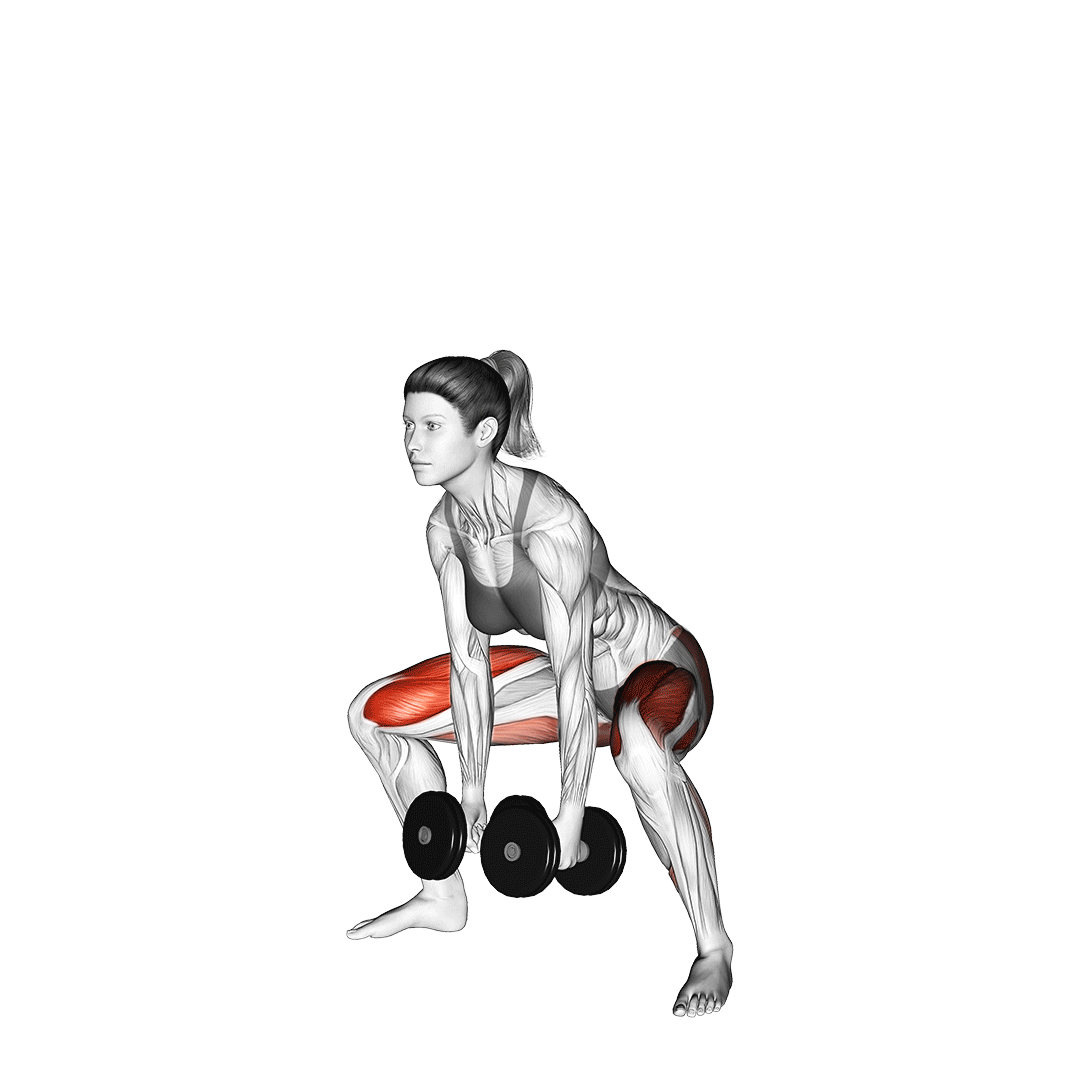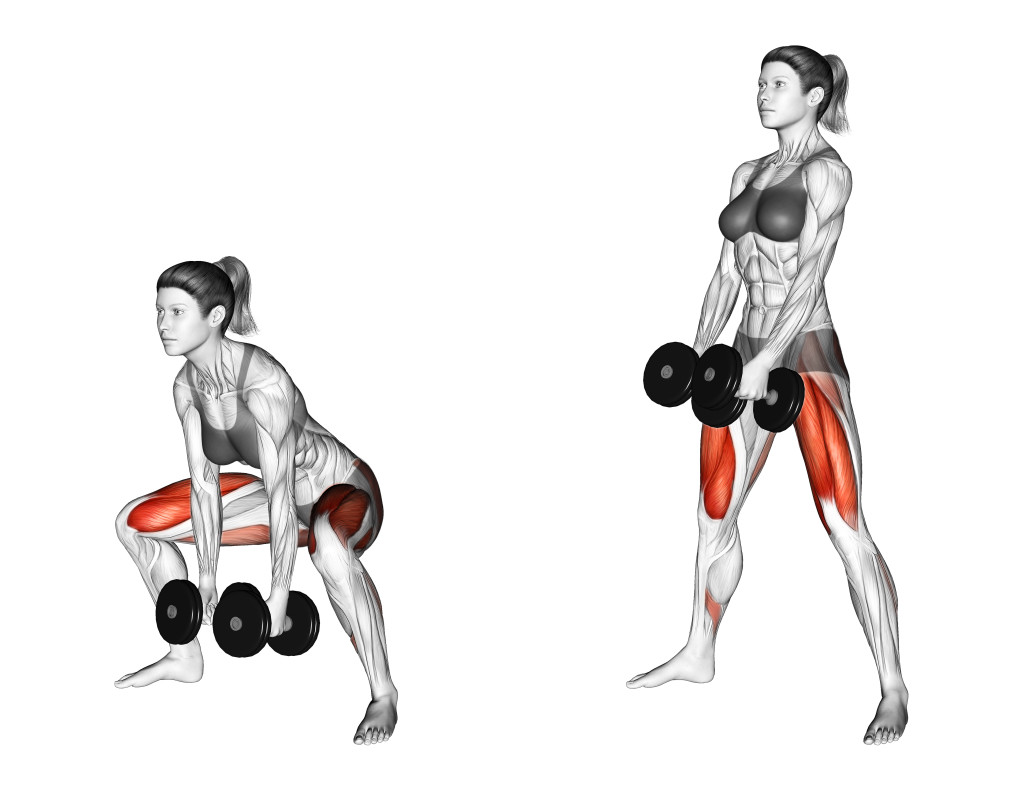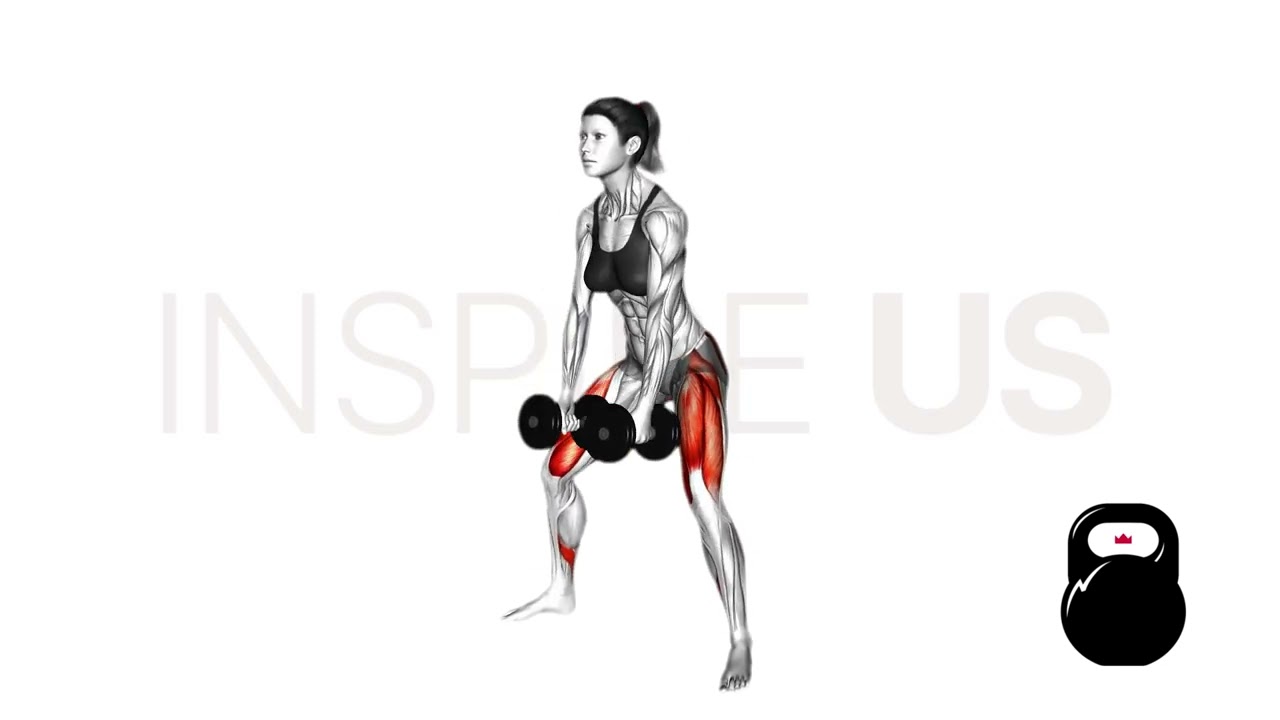Dumbbell Sumo Deadlift: Benefits, Muscles Worked, and More
The dumbbell sumo deadlift is a popular choice of exercise for athletes, bodybuilders, and fitness enthusiasts alike because it is a highly effective workout for building the legs, back, and core muscles.

The fact that the dumbbell sumo deadlift offers a wider range of motion than conventional barbell deadlifts is one of its main advantages. This can be useful in engaging different muscle groups and enhancing general flexibility.
To prevent injuries and to get the most out of the dumbbell sumo deadlift, it is critical to perform it correctly. This may entail maintaining a straight back, using the core, and lifting objects with a controlled and steady motion.
It is also advised to begin with lesser weights and increase them gradually as one’s strength and technique advances.
How to Perform a Dumbbell Sumo Deadlift
To perform a dumbbell sumo deadlift, start by positioning oneself in front of a pair of dumbbells with the feet about twice shoulder-width apart and pointing outwards at an angle.
Reach down and grab the dumbbells with both hands using an overhand grip.
Lower the hips and bend at the knees to grab the weights, keeping the back straight and core engaged. From this position, extend the hips and knees to stand upright, lifting the weights to the level of the hips.
Make sure to keep the back straight and the core engaged throughout the lift. Keep the shoulders back and the gaze forward, avoiding the temptation to look down.
Once the weights have been lifted to the top of the movement, pause for a moment, then lower the weights back down to the starting position, keeping the back straight and core engaged.
Repeat for the desired number of reps.
It is important to start with lighter weights and gradually increase the weight as strength and technique improve.
Additionally, it is recommended to focus on using proper form and technique by keeping the back straight, the core engaged, and using a controlled and steady motion throughout the lift to maximize strength gains and greatly reduce the risk of injury.
Muscles Worked in a Dumbbell Sumo Deadlift
The dumbbell sumo deadlift is a compound exercise that works the quadriceps, hamstrings, glutes, adductors, calves, lower back, and muscles responsible for gripping, among other muscle groups.
The muscles unite to extend the hips and knees, which frees the weight from the ground.

The adductors, which are found within the inner thigh, help to stabilize the legs and keep balance. Ankle extension is further aided by the gastrocnemius and soleus muscles in the calves. The erector spinae and other lower back muscles are essential for maintaining good posture and supporting the spine during the lift.
While holding onto the dumbbells, one's grip strength is put to the test. Engaging the core and maintaining a neutral spine throughout the movement is crucial for performing the exercise properly.
Benefits of the Dumbbell Sumo Deadlift
A powerful exercise that has multiple advantages for both strength and general health, the dumbbell sumo deadlift boasts the strengthening of the lower body as one of its main advantages. The dumbbell sumo deadlift can aid to improve overall lower body strength, power, and size by working the quadriceps, hamstrings, glutes, adductors, and calves.
This can then result in better performance during other exercises like squats and lunges as well as during regular activities requiring lower body power like carrying heavy goods or climbing stairs.
Core Muscle Development
The development of a powerful, steady core is an advantage of the dumbbell sumo deadlift. The exercise tests the core muscles' ability to maintain good posture and balance, particularly the rectus abdominis, obliques, and erector spinae. This supports the development of a solid, sturdy core that can lessen the risk of injury and enhance general athletic performance.
Improved Posture
The dumbbell sumo deadlift can benefit posture and general body mechanics as well. The exercise aims to address imbalances and enhance posture by working the lower back, hips, and leg muscles. This can lessen the chance of injury and enhance general body mechanics, making daily activities simpler and less taxing on the body.
Increase Grip Strength
Last but not least, the dumbbell sumo deadlift can aid in developing grip strength, which is crucial for many activities, including sports and weightlifting. The exercise offers a wider range of motion and a more powerful grip training because dumbbells are used in place of a barbell.
Dumbbell Sumo Deadlift Variations
1. Romanian Dumbbell Sumo Deadlift
Start in a stance with the feet wider than hip-width apart and the toes pointing outwards to complete a Romanian dumbbell sumo deadlift.
Engage the core muscles while holding the dumbbells and maintain a straight back. Throughout the workout, the knees are kept slightly bent.
Keeping the dumbbells close to the thighs, lower your body toward the ground. The hamstrings and glutes should be worked in particular. Returning to the starting position, drive through the heels to expand the hips and knees. It is crucial to keep good form and use the right muscles throughout the action. Repeat for the required number of reps.
2. Alternating Dumbbell Sumo Deadlift
The feet should be wider than hip-width apart and pointed outwards while starting the alternating dumbbell sumo deadlift.
Take hold of one dumbbell and contract the core muscles while maintaining a straight back. Keep the dumbbell close to the leg as the body is lowered toward the floor with a small bend in the knees.
The leg across from the dumbbell being raised should be extended at the hip and knee. In order to get back to the beginning position, push through the heel. With the other arm, repeat the action. Throughout the exercise, it's critical to keep good form and use the right muscles, swapping sides with each rep.
3. Goblet Sumo Squat
To begin the goblet sumo squat, use a wider-than-hip-width stance with the toes pointed outward. Both hands grip the dumbbell's or kettlebell handle tightly to the chest while holding it vertically in the air.

While using the core muscles, the back should remain straight. With a slight bend in the knees, lower the body towards the ground while maintaining the upright position of the torso.
To get back to the beginning position, one should concentrate on extending the hips and knees and pushing through the heels. It is crucial to keep the movement in an appropriate form at all times, keeping the weight close to the body and the core active.
For the required amount of reps, repeat.
References
1. Belcher D. The sumo deadlift. Strength & Conditioning Journal. 2017 Aug 1;39(4):97-104.
2. Escamilla RF, Francisco AC, Kayes AV, Speer KP, Moorman 3rd CT. An electromyographic analysis of sumo and conventional style deadlifts. Medicine and science in sports and exercise. 2002 Apr 1;34(4):682-8.

